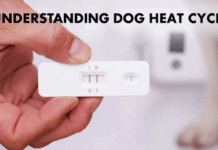Last Updated on January 19, 2022 by Dogs Vets
If You See These 7 Signs on Your Pet, Call an Emergency Vet ASAP
If you’re a new fur parent, some of the things that you should know early on are everything that involves emergencies.
Certainly, you must know what to do during these situations. But more importantly, you must learn how to identify emergencies in the first place.
Below are only some tell-tale signs that your pet might need emergency vet care immediately.
1. Eye inflammation
The redness of the eye is often taken for granted by some pet owners. Which should not be the case.
If you notice extreme redness on the eyes of your pet, you must have them checked as soon as possible. Especially if there’s excessive discharge coming out of the eyes.
Another sign that there might be something wrong with the eyes of your pets is when they keep pawing their eyes or scratching them on the carpet.
If you own a pug or any animal with prominently exposed eyes, you have to be more careful about them as they are more prone to cherry-eye inflammation.
2. Bite wounds or scratches
Every time you let your pet play with other animals, you have to watch out for other pets that start to become aggressive towards your pet.
Playful biting is cool. However, there’s always that one pet that can’t control its force and ends up hurting other animals. And you have to be on the lookout for those pets. If not stopped immediately, aggressive biting can lead to lacerations and wounds.
If this happens, call a vet ambulance for help immediately. Especially if you’re outside and there’s no first aid kit readily available.
If by any chance you’re able to get a hold of an emergency kit, make sure to apply pressure over the wound with a clean gauze pad or cloth to stop the bleeding while help is on the way.
3. Traumatic injuries
This is a no brainer. Once you’ve learned that your pet got injured, your automatic response should be to call a vet ambulance or your emergency vet.
It will help a lot if you know how to do first aid so make sure to learn the basic first aid for pets. This way, you can help your pet manage the pain and minimize the harm while help is on the way.
More importantly, you have to be extra careful about your dogs or cats. Although they’re one of the smartest domestic animals, they still don’t know the dangers of the outside so make sure to look out for them.
This way, you can avoid or minimise the injuries on your pets.
4. Vomiting or diarrhea
If you see your pet vomiting all of a sudden, or if there are irregularities in their poop, there’s certainly something wrong with your pet. It might be because of an underlying condition or disease. That’s why you must inform your vet immediately and schedule a consultation.
5. Difficulty in breathing
You can tell if your pet is experiencing shortness of breath if it breathes rapidly with coughing, or if its tongue’s colour turns blue, grey, or pale.
If you notice these signs on your pet, ask for help immediately. This could be because of an underlying condition like pneumonia, heart disease, or asthma.
Call your vet and schedule a consultation as soon as possible.
6. Choking
You know that pets, especially dogs, love to chew everything that they can get their hands on. That’s why they are so prone to choking or ingesting harmful objects.
If you think that your pet is choking on something, make sure to bring your pet to an emergency vet immediately.
You can try to retrieve the object yourself if you think it’s retrievable with a pair of tweezers. But if the object is not visible, you should leave it to the experts.
To avoid these kinds of situations, make sure to keep away smaller objects from your pet so they won’t be tempted to play and chew on them.
7. Ingestion of harmful substances
There’s a reason why certain products have warning signs on them saying “keep away from children” for obvious reasons. These products are potentially harmful to kids when ingested.
It’s the same thing with your pets. There are certain products or food that you must keep away from your pet’s reach.
Below are these substances:
- Chocolates
- Rodenticides
- Acetaminophen
- Foods that have Xylitol
- Marijuana
- Grapes or raisins
- Other plants like lilies
Make sure to keep these away from your pets to avoid health emergencies as they can quickly go south from there.
But if that happens (knock on wood), call your vet immediately and ask for advice.
Conclusion:
We hope you enjoyed this article…
Please feel free to share with us in the comments section below.

















